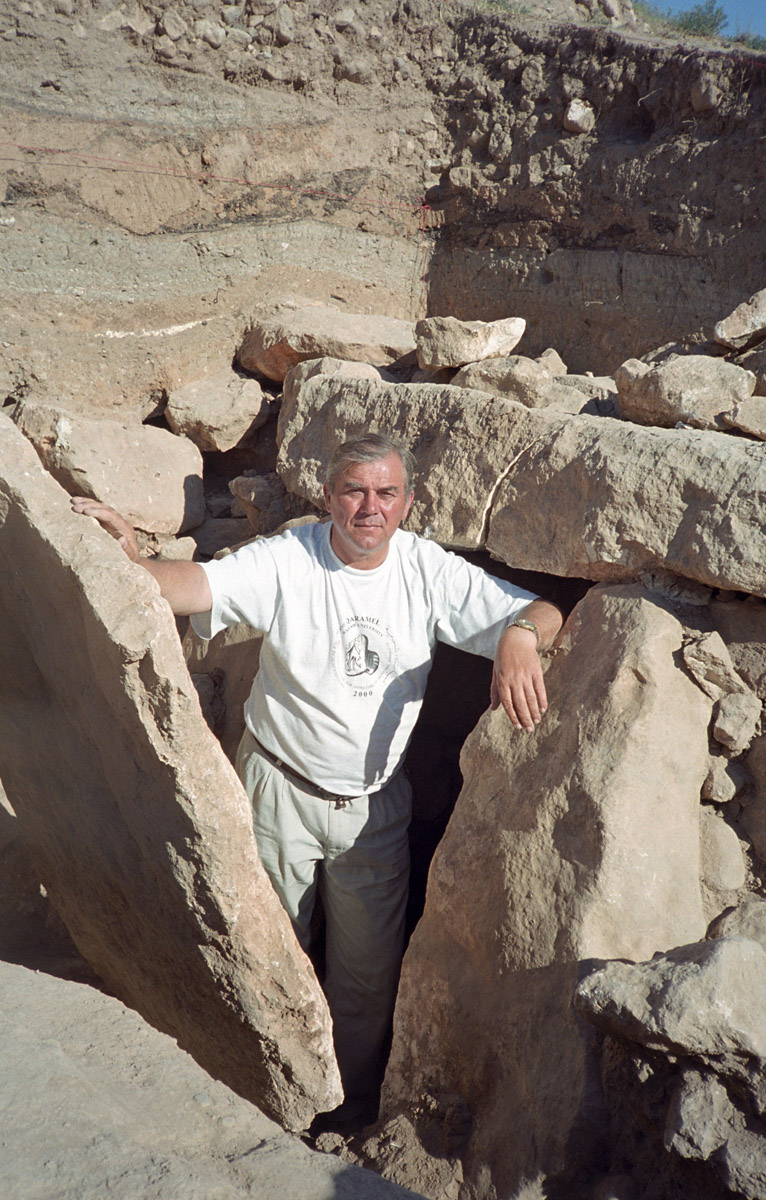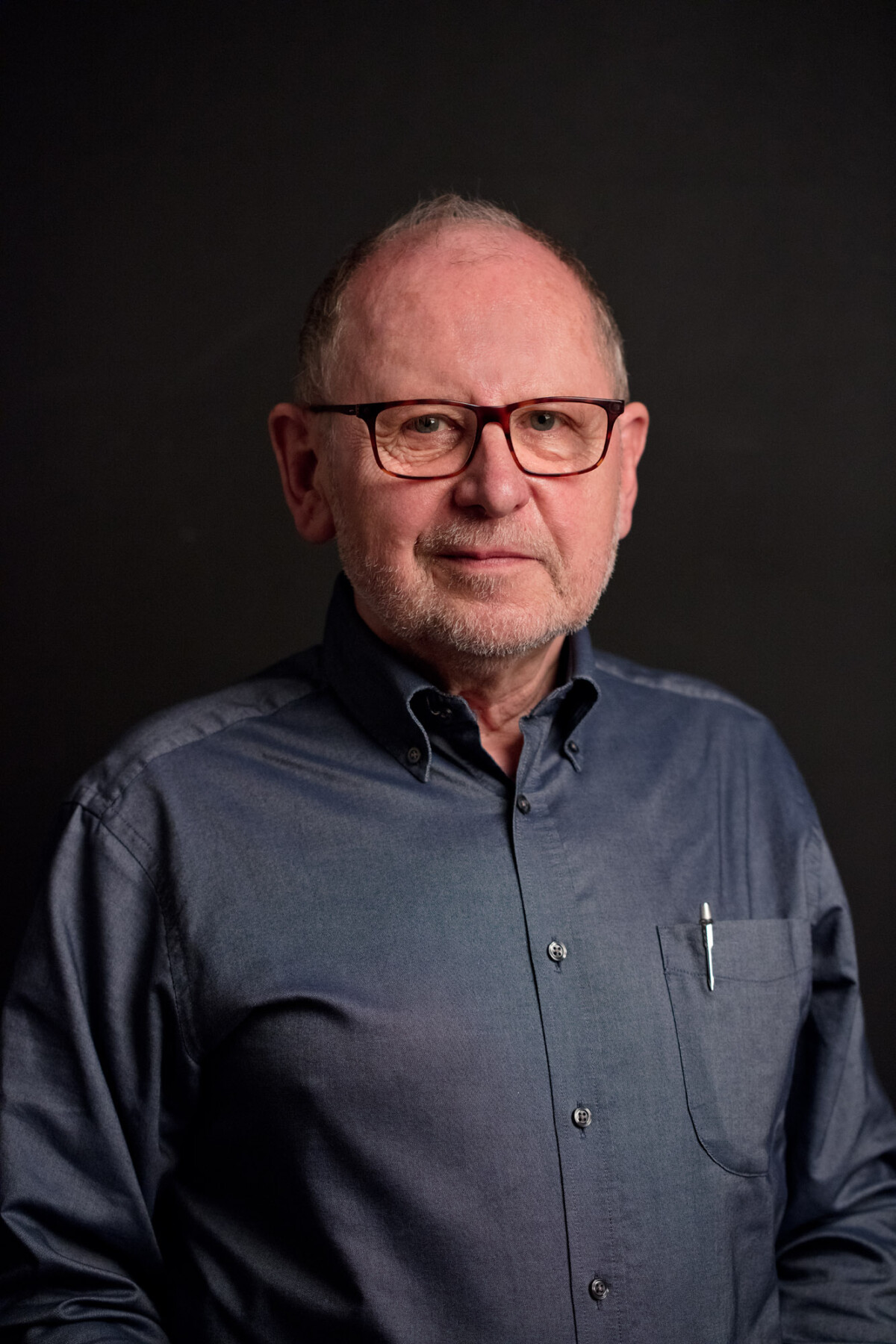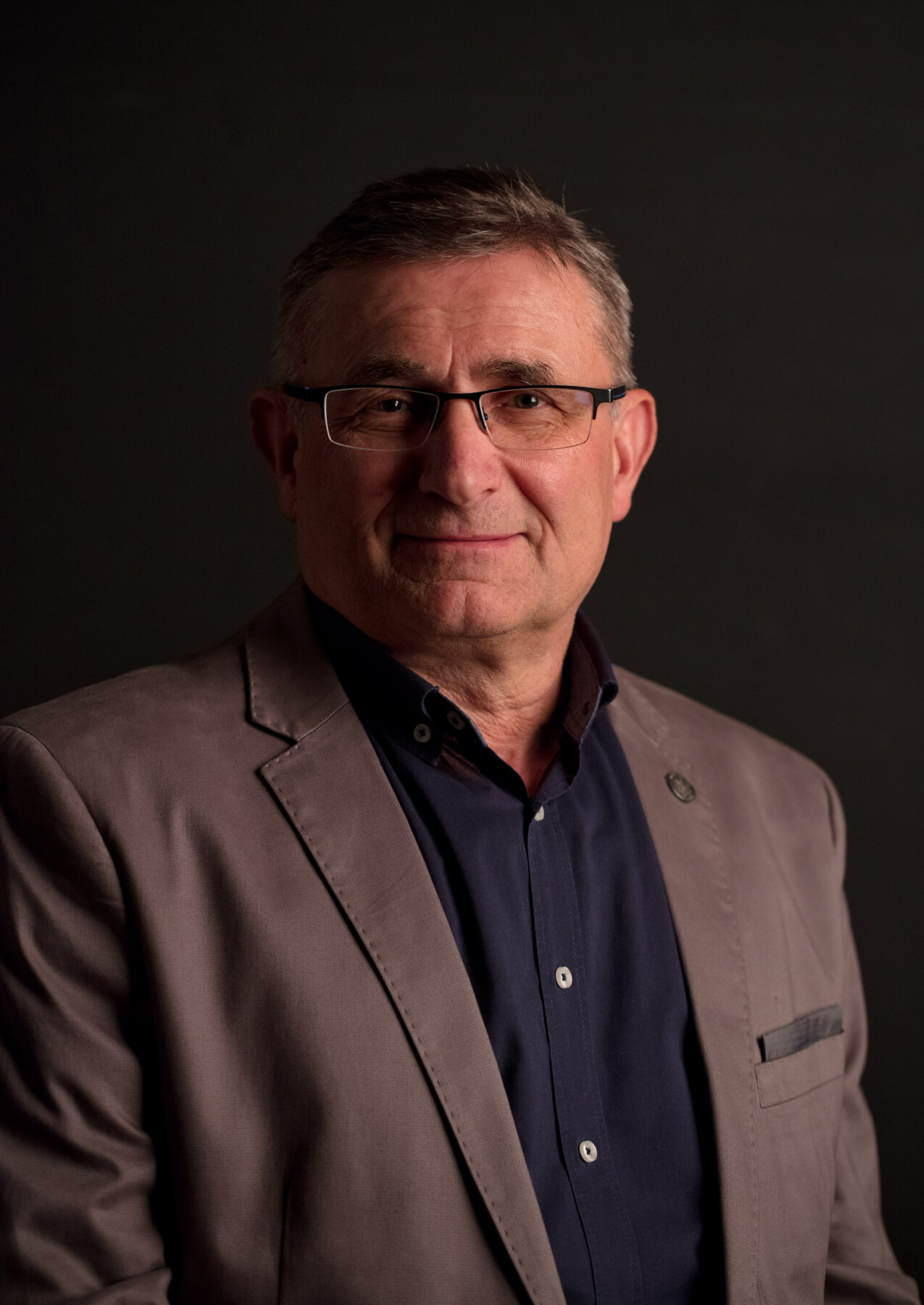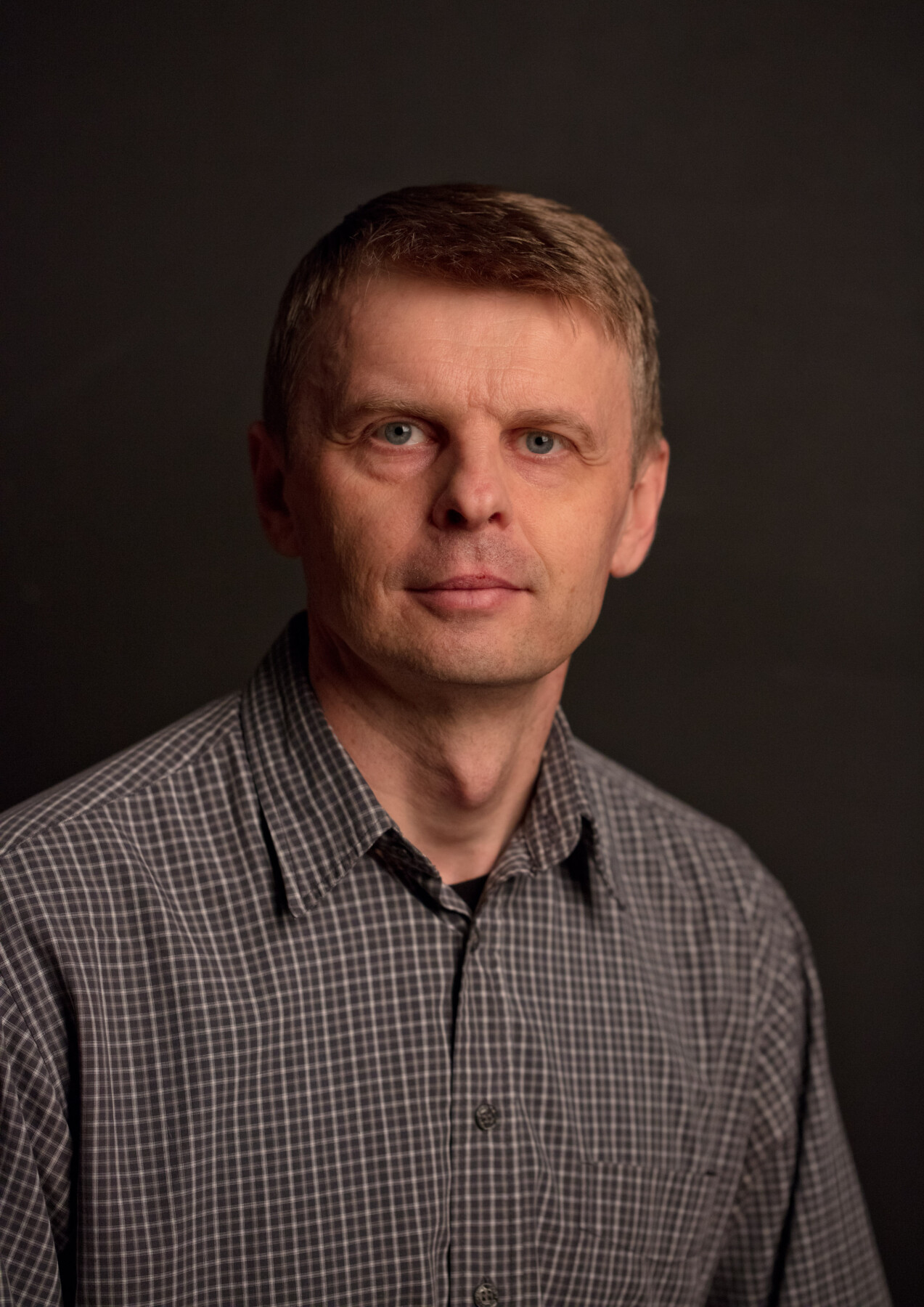
prof. dr hab. Ryszard Feliks Mazurowski
(retired)
e-mail:
rfmazurowski@uw.edu.pl
research interests:
The Neolithic of Europe and the Middle East
bibliography:
PDF File

prof. dr hab. Ryszard Feliks Mazurowski
(retired)
e-mail:
rfmazurowski@uw.edu.pl
research interests:
The Neolithic of Europe and the Middle East
bibliography:
PDF File

Franciszek Stepniowski, PhD
Katedra Archeologii Orientu
e-mail:
f.stepniowski@uw.edu.pl
duty hours:
Tuesday 10.00–12.00, room 3.03
research interests:
– archaeology and history of Assyria
–theory and history of archaeology
bibliography:
1. ‘Upper Temples’ on Assyrian ziqqurats – did they ever exist?, (w:/in:) B. Hrouda, S. Kroll, P.Z. Spanos (red./eds), Von Uruk nach Tuttul. Eine Festschrift für Eva Strommenger, München-Wien 1992, 197-202, Taf. 85
2. Bijan in the Neo-Assyrian Period – Results of the Excavations in 1981 (Autumn) – 1983, Etudes et Travaux 16 (1993), 425-433
3. „I wykonasz na jego skroni nacięcie krzemiennym ostrzem…” – świadectwa używania narzędzi krzemiennych i obsydianowych w tekstach klinowych jako postulat badawczy dla archeologii Mezopotamii epoki brązu i żelaza//”You make an incision in his temple with a flint blade…” – the evidence for use of flint tools in cuneiform texts as a research propos al for Mesopotamian archaeology of the Bronze and Iron Ages, (w:/in:) J. Lech, D. Piotrowska (red./eds), Z badań nad krzemieniarstwem epoki brązu i wczesnej epoki żelaza//Studies of Flint-Mining and Flint-Working In the Bronze and Early Iron Ages, Warszawa1997 [Komitet Nauk Pra- i Protohistorycznych PAN, Prace, Tom II], 17-23
4. (wraz z//with P.A. Miglus) Formen, Verzierung und Verteilung der Keramik, (w:/in:) P.A. Miglus et al., Die Frühislamische Keramik von Tall Aswad (Ar-Raqqa I), Mainz am Rhein 1999, 19-54, Taf. 11-76
5. (wraz z//with J. Lech) – red./eds V. Gordon Childe i archeologia w XX wieku//V. Gordon Childe and Archaeology in the 20th Century, Warszawa 1999 [Komitet Nauk Pra- i Protohistorycznych PAN, Prace, Tom III]
– (w tym tomie//therein:) Rewolucja urbanistyczna Gordona Childe’a//Gordon Childe’s ‘Urban Revolution’, 111-136
6. Między pradziejami a sztuką klasyczną. Estetyka sztuki Starożytnego Wschodu//Between Prehistory and Classical Art. Aesthetics of the Ancient Oriental Art, (w//in:) B. Gediga, A.P. Kowalski (red./eds), Estetyka w archeologii//Aesthetics in Archaeology, Gdańsk 2003, 37-56
7. (wraz z//with P. Bieliński) red.//eds Aux pays d’Allat. Mélanges offerts à Michał Gawlikowski, Warszawa 2005
– (w tym tomie//therein:) The ‘Gate to Hell’. Some peculiar stone objects from Bijan Island, 263-275
8. The Temples in Aššur. An Overview of the Sacral Architecture of the ‚Holy City’, ISIMU 6 (2003 – issued 2007), 234-244
9. Architekturmodelle, (w//in:) E, Strommenger, P.A. Miglus, Tall Bi’a/Tuttul V: Altorientalische Kleinfunde, Wissenschaftliche Veröffentlichungen der Deutschen Orient-Gesellschaft 126, Wiesbaden 2010, 105-113, Taf. 104-121
10. (wraz z//with P.A. Miglus, K. Radner), Ausgrabungen in Assur. Wohnquartiere in der Weststadt Teil I, Wissenschaftliche Veröffentlichungen der Deutschen Orient-Gesellschaft 152, Saarbrücken 2016
other:
2010-2017 editor of “Światowit”

dr hab. Dariusz Manasterski
Stone Age Department
e-mail:
dmanasterski@uw.edu.pl
phone number:
+48 22 55 22 824
duty hours:
Wednesday 11.00–13.00. room 3.24
research interests:
Long-distance contacts and pattern circulations in cultural transformations at the turn of the stone and bronze ages in the borderland area of the Central and Eastern European Lowlands. The role and significance of the impact of Bell Beakers culture on the local groups of the absorbing and productive economy and their transformation in the Trzciniec cultural circle. Thread, style and technology of prehistoric ceramic vessels as identifiers, reminiscences and reflections of past cultural processes.
bibliography:
Dariusz Manasterski.pdf
ORCID

PhD Marcin Białowarczuk
e-mail:
m.bialowarczuk@uw.edu.pl
duty hours:
Tuesday 13:00 – 14:00
research interests:
Research interests include the Neolithic, with particular reference to the origins of architecture, lithic analyses and human adaptations to harsh environments during transitional period from the hunter- gatherer to agriculture and farming economy in the Near East and the Arabian Peninsula.
bibliography:
Białowarczuk M., 2017, Preliminary report on Qumayrah–Ayn 2, a new prehistoric site in northern Oman. Polish Archaeology in the Mediterranean, 26/1, 543-555.
Białowarczuk M., 2016, From circle to rectangle. Evolution of the architectural plan in the early Neolithic in the Near East. Polish Archaeology in the Mediterranean 25, pp. 575–593.
Bieliński P., Białowarczuk M., Reiche A., Smogorzewska A. & Szymczak A. 2016. Excavations in 2014 and 2015. Preliminary report on the sixth and seventh seasons of Kuwaiti-Polish archaeological investigations. Kuwait City–Warsaw: National Council for Culture Arts and Letters, Kuwait & Polish Centre of Mediterranean Archaeology, University of Warsaw.
Białowarczuk M., 2015, Experimental reconstruction of Late Neolithic local quartz exploitation patterns in the Arabian Gulf. New discoveries from Bahra 1,Kuwait, an Ubaid-related site. Paleorient, 41/2, pp. 71-84.
Bieliński P., Białowarczuk M., Kiersnowski H., Piątkowska-Małecka J., Reiche A., Smogorzewska A., Szymczak A., 2015, Bahra 1. Excavations in 2013. Preliminary Report on the Fifth season of Kuwaiti-Polish Archaeological Explorations. (Chapter V. Lithics, pp. 83-92), National Council for Culture Arts and Letters, Kuwait and Polish Centre of Mediterranean Archaeology, University of Warsaw, Warsaw-Kuwait.
Gackowski A., Białowarczuk M., 2014, Settlement of Danubian cultures in the area of Świecie Plateau. Osadnictwo kultur naddunajskich na Wysoczyźnie Świeckiej. Acta Analecta Resoviensisa, T. 9, s. 155-194.
Januszek K., Białowarczuk M., 2014, Potencjalne metody pozyskiwania lokalnych surowców krzemiennych przez społeczności końca neolitu i początku epoki brązu na stanowiskach 3 i 6 w Supraślu, woj. podlaskie. Studia i Materiały do Badań nad Neolitem i Wczesną Epoką Brazu na Mazowszu i Podlasiu, T. IV, s. 111-128.
Białowarczuk M., 2013, Ground and pecked stone industry of Bahra 1, an Ubaid-related settlement in Northern Kuwait. Polish Archaeology in the Mediterranean 22, pp. 569–586.
Białowarczuk M., 2013, Quartz and ground stone industries of Bahra 1. In: Szymczak A. (ed.) AS-SABBIYA Autumn 2012. Report on the Eighth Season of Joint Kuwaiti – Polish Archaeological Investigations in Kuwait: Bahra 1, Ubaid Culture Related Settlement (4th Season), National Council for Culture Arts and Letters, Kuwait and Polish Centre of Mediterranean Archaeology, University of Warsaw, Warsaw-Kuwait, pp. 83-97.
Mazurowski R. F., Białowarczuk M., Januszek K., 2012, Architecture of Tell Qaramel, in: R. F. Mazurowski & Y. Kanjou (eds.) TELL QARAMEL PROTONEOLITHIC AND EARLY PRE-POTTERY NEOLITHIC SETTLEMENT IN NORTHERN SYRIA (Preliminary results of the Syrian-Polish archaeological excavations 1999-2007), PCMA Excavation Series 2, Warsaw, pp. 34-61.
Białowarczuk M., 2012, Półwytwór topora z Dolistowa Starego, woj. podlaskie, Światowit, Tom VII (XLVII), Fasc. B, s. 25 – 28.
Gawrońska J., Białowarczuk M., 2011, Kultura amfor kulistych na Nizinie Północnomazowieckiej, Studia i Materiały do Badań nad Neolitem i Wczesną Epoką Brązu na Mazowszu i Podlasiu, tom I, s. 13-49.
Białowarczuk M., Gawrońska J., 2011, Kultura amfor kulistych w przemianach poźnego neolitu i wczesnej epoki brązu w połnocno-wschodniej Polsce, [w] U. Stankiewicz, A. Wawrusiewicz (eds.) Na rubieży kultur. Badania nad okresem neolitu i wczesną epoką brązu., Muzeum Podlaskie w Białymstoku, s. 109-118.
Białowarczuk M., 2010, Early Neolithic wall construction techniques in a light of etnographical obserwations in architecture of modern Syrian village of Qaramel, Polish Archaeology in The Mediterranean, XIX, p. 586 – 601.
other:
Marcin Białowarczuk is a lecturer in the Institute of Archaeology at the University of Warsaw since 2004. He has worked on archaeological sites in Poland and the Near East. In 2001 – 2011 he was a member of Polish-Syrian Archaeological Mission in Tell Qaramel, Syria, where he analyzed the development of architecture. The result of this work was his Ph.D. which he received in 2013 at the University of Warsaw. Since 2011 he has been working with the Kuwaiti-Polish Archaeological Mission in Bahra 1, Kuwait. His most recent fieldwork has been in the Sultanate of Oman, where he is responsible for prehistoric research in the framework of a new Omani-Polish Quamyrah Archaeological Project.